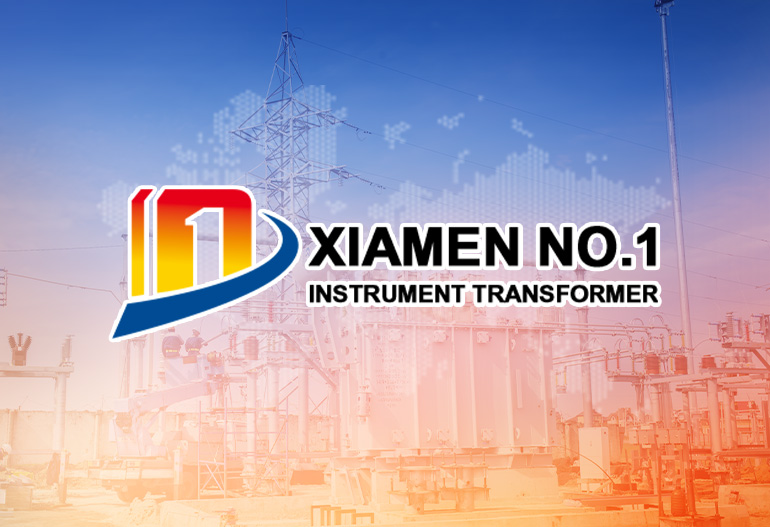
News
Analysis of Selection Criteria for Rated Secondary Current of Current Transformers
1. Introduction
2. Fundamentals of Rated Secondary Current
3. Key Selection Criteria
3.1 Compatibility with Connected Equipment
Protective Relays: Modern digital relays often support multiple input ratings (e.g., 1 A or 5 A) via configuration, but electromechanical relays are typically fixed to one rating. Using a mismatched CT can lead to undercurrent or overcurrent conditions in the relay, resulting in incorrect tripping or failure to operate during faults.
Meters and Indicators: Analog meters (e.g., moving-coil ammeters) are calibrated for a specific secondary current. A 5 A meter connected to a 1 A CT will display only 20% of the actual current, leading to misleading readings.
Data Acquisition Systems: Current transducers and analog-to-digital converters (ADCs) in SCADA systems require the secondary current to fall within their input range for accurate digitization. Overloading these components can cause saturation or damage.
3.2 Power Loss and Cable Efficiency
5 A Systems: Higher secondary currents result in greater power losses. For example, a 5 A CT with a 100 m cable (copper, 4 mm², resistance ≈ 5 Ω/km) will dissipate 52×(0.1×5)=12.5 W. This can lead to excessive heating in enclosed cabinets, requiring larger cable sizes or additional cooling.
1 A Systems: Lower secondary currents reduce losses. The same 100 m cable with a 1 A CT dissipates 12×0.5=0.5 W, minimizing heat generation and allowing the use of smaller, more cost-effective cables.
3.3 Accuracy Requirements
Low Burden Applications: For measuring circuits with low burdens (e.g., < 5 VA), 1 A CTs often exhibit better accuracy. Their lower current reduces voltage drop across the burden, keeping the CT closer to its optimal operating range.
High Burden Applications: Protective circuits with higher burdens (e.g., 10–30 VA) may benefit from 5 A CTs. The higher secondary voltage (due to V=I×Z, where Z is the burden impedance) helps maintain linearity, especially during fault conditions.
3.4 Fault Current Handling
Saturation Risk: CTs with lower secondary currents (e.g., 1 A) may saturate more easily under fault conditions if the burden is not properly matched. Saturation distorts the secondary current waveform, delaying or invalidating relay operation.
Relay Sensitivity: 1 A CTs produce smaller fault currents in the secondary circuit, requiring relays to have higher sensitivity to detect low-level faults. Modern digital relays can compensate for this, but older electromechanical relays may struggle.
Thermal Rating: The secondary winding must withstand thermal stresses during faults. 5 A CTs typically have thicker secondary conductors, offering better thermal endurance in high-fault scenarios.
3.5 System Voltage and Scalability
High-Voltage (HV) Systems: HV substations often use 1 A CTs due to long cable runs between the CTs (mounted on HV bushings) and control rooms. The reduced power loss and cable cost outweigh the need for higher current levels.
Low-Voltage (LV) Systems: LV switchgear and industrial plants typically use 5 A CTs. Shorter cable runs minimize losses, and 5 A equipment is more readily available and cost-effective for small-scale applications.
3.6 Industry Standards and Regional Practices
IEC Regions: Europe, Asia, and most of the world follow IEC standards, where both 1 A and 5 A are common. 1 A is prevalent in HV systems, while 5 A dominates in LV and industrial applications.
ANSI Regions: North America primarily uses 5 A CTs, reflecting historical practices and the prevalence of ANSI/IEEE standards that emphasize 5 A for most applications.
Specialized Sectors: Renewable energy systems (e.g., wind farms) often adopt 1 A CTs to minimize losses in long cable runs from turbines to control centers. Railway electrification systems may use 0.5 A CTs for low-power, high-precision measurements.
3.7 Cost Considerations
CT Cost: 5 A CTs are generally cheaper than 1 A CTs of equivalent rating due to higher production volumes and simpler design (thicker secondary windings).
Cable Cost: For long distances, 1 A systems offer significant savings. A 100 m run using 4 mm² cable costs approximately 30% less than the 10 mm² cable required for a 5 A system to achieve the same loss levels.
Equipment Cost: 5 A relays and meters are often more affordable and widely available, especially in regions where they are standard.
4. Comparative Analysis: 5 A vs. 1 A Secondary Currents
| Parameter | 5 A Secondary Current | 1 A Secondary Current |
|---|---|---|
| Power Loss | Higher (I²R) | Lower (I²R) |
| Cable Size | Larger (to minimize resistance) | Smaller (reduced resistance requirement) |
| Accuracy at Low Burden | Lower | Higher |
| Fault Handling | Better thermal endurance | Requires higher relay sensitivity |
| Availability | Widespread (especially in ANSI regions) | Common in IEC regions, HV systems |
| Cost (CT) | Lower | Higher |
| Cost (Cables) | Higher (for long runs) | Lower (for long runs) |
5. Special Applications and Edge Cases
Microgrids: Small-scale microgrids with limited fault currents may use 0.5 A CTs to enhance measurement accuracy in low-current conditions.
DC Systems: While CTs are primarily for AC, some DC current transducers use 1 A outputs to interface with standard AC equipment via rectification.
Mixed Systems: In retrofits, adapters (e.g., 5 A to 1 A current transformers) can bridge incompatible ratings, though this introduces additional losses and potential inaccuracies.
6. Selection Process Flowchart
Identify the input requirements of all connected devices (relays, meters, etc.).
Calculate the secondary circuit length and required burden.
Evaluate power loss and cable size constraints.
Assess accuracy class and fault current handling needs.
Consider regional standards and equipment availability.
Perform a cost-benefit analysis of 5 A vs. 1 A systems.
Validate the selection with system simulations (e.g., using PSCAD or ETAP) to ensure compliance with performance targets.
7. Conclusion

XUJIA
I graduated from the University of Electronic Science and Technology, majoring in electric power engineering, proficient in high-voltage and low-voltage power transmission and transformation, smart grid and new energy grid-connected technology applications. With twenty years of experience in the electric power industry, I have rich experience in electric power design and construction inspection, and welcome technical discussions.

